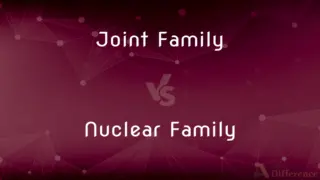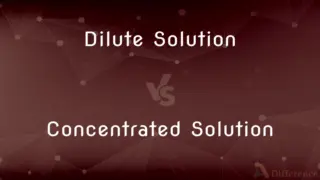DHTML vs. HTML5 — What's the Difference?
By Tayyaba Rehman — Published on November 1, 2023
DHTML combines HTML, JavaScript, and CSS for interactivity, whereas HTML5 is an advanced version of HTML optimized for multimedia.

Difference Between DHTML and HTML5
Table of Contents
ADVERTISEMENT
Key Differences
DHTML refers to Dynamic HTML, a collection of technologies used together to create interactive and animated websites by combining traditional HTML, CSS, and JavaScript. In contrast, HTML5 is the latest version (fifth revision) of the HTML standard, offering new features, capabilities, and behaviors that allow for richer web experiences and more sophisticated site functionality.
DHTML allows script-based changes to a webpage's style and content after the page has loaded, without reloading the entire page. On the other hand, HTML5 provides a more advanced structure by introducing new elements, attributes, and behaviors, alongside a larger set of technologies that allow the building of powerful websites and applications.
DHTML is not a stand-alone technology but rather a term describing the art of making dynamic and interactive web pages. In contrast, HTML5 encompasses a range of specifications for creating graphics and multimedia, enabling developers to include features like video playback, drag-and-drop, and more without relying on plugins.
DHTML relies heavily on scripting, particularly JavaScript, to function, meaning content can be altered dynamically. HTML5, however, supports scripting but also enhances simple syntax and native multimedia initialization, allowing for a more comprehensive and versatile user experience with less reliance on scripting.
The adoption of DHTML was marred by inconsistencies across different browsers, leading to unpredictable user experiences. Conversely, HTML5 was designed to improve interoperability and decrease the same inconsistencies plaguing DHTML, providing a more consistent user experience across browsers.
ADVERTISEMENT
Comparison Chart
Definition
Combination of HTML, CSS, and JavaScript
5th version of HTML standard
Purpose
Interactive, dynamic content
Rich content, cross-platform applications
Dependencies
Heavy reliance on JavaScript
Less reliant on plugins/scripting
Browser Compatibility
Inconsistent
Improved consistency
Multimedia Support
Limited, plugin-based
Extensive, native support
Compare with Definitions
DHTML
An approach combining HTML, CSS, and JavaScript.
DHTML enables the content on the page to change without needing to reload the page.
HTML5
A markup language designed for cross-platform compatibility.
HTML5 applications can run consistently across different browsers and devices.
DHTML
A technology suite used to create interactive websites.
With DHTML, developers can create web pages that respond to user interactions in real-time.
HTML5
The core technology markup language for structuring and presenting content online.
HTML5 is universally used for creating modern, compliant web pages and applications.
DHTML
A method for creating interactive web applications.
DHTML is essential for developing dynamic web elements like animated drop-down menus.
HTML5
The latest version of the HyperText Markup Language standard.
HTML5 introduces new elements that streamline embedding video and audio content.
DHTML
Dynamic manipulation of web content and styles.
Using DHTML, the appearance of a webpage can adjust based on user input.
HTML5
An enhancement to the classic HTML specifications.
HTML5 includes new features like local storage and geolocation APIs.
DHTML
An umbrella term for dynamic web content technologies.
DHTML isn't a programming language, but rather a collection of web development techniques.
HTML5
A technology that supports multimedia and graphical content.
With HTML5, developers can build robust, interactive websites with less reliance on plugins.
Common Curiosities
What is the main purpose of DHTML?
DHTML is used to create dynamic web pages that can respond to user interactions without needing to reload the page.
Can HTML5 be used for game development?
Yes, HTML5 is a popular choice for web-based game development due to its cross-platform nature and robust features.
Is DHTML a programming language?
No, DHTML is not a programming language but a set of web technologies used together for interactive websites.
What does DHTML stand for?
DHTML stands for Dynamic HyperText Markup Language.
What is DHTML?
DHTML is Dynamic HTML, a blend of HTML, CSS, and JavaScript to create dynamic and interactive web content.
What are the key features of HTML5?
HTML5 offers new semantic elements, enhanced multimedia support, improved form inputs, and offline storage, among other features.
What multimedia features does HTML5 support?
HTML5 natively supports multimedia elements like audio, video, and canvas for drawings.
Is DHTML a separate language from HTML?
No, DHTML isn't a separate language; it's a term for web content that's dynamic, using a mix of HTML, CSS, and JavaScript.
How do browsers support HTML5 compared to older HTML versions?
Modern browsers have extensive support for HTML5 features, while older versions might have limited or no support for certain elements.
Does DHTML work consistently across all browsers?
DHTML can behave inconsistently across browsers due to its heavy reliance on JavaScript and varying browser interpretations.
Is HTML5 a successor to DHTML?
No, HTML5 is the fifth version of HTML. DHTML refers to a combination of technologies including HTML, JavaScript, and CSS to create dynamic content.
Was animation possible with DHTML?
Yes, DHTML allowed for simple animations and interactivity using JavaScript and CSS.
Is HTML5 more mobile-friendly than DHTML techniques?
Yes, HTML5 is designed with modern web standards in mind, providing better support for mobile and responsive designs compared to older DHTML techniques.
What's a significant advantage of using HTML5 over previous versions?
HTML5 introduces many new features, like video and audio elements, that were previously reliant on plugins.
Can DHTML and HTML5 be used together?
Yes, DHTML techniques can be implemented within an HTML5 framework.
Share Your Discovery

Previous Comparison
Joint Family vs. Nuclear Family
Next Comparison
Dilute Solution vs. Concentrated SolutionAuthor Spotlight
Written by
Tayyaba RehmanTayyaba Rehman is a distinguished writer, currently serving as a primary contributor to askdifference.com. As a researcher in semantics and etymology, Tayyaba's passion for the complexity of languages and their distinctions has found a perfect home on the platform. Tayyaba delves into the intricacies of language, distinguishing between commonly confused words and phrases, thereby providing clarity for readers worldwide.












































